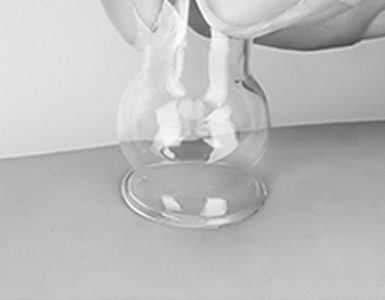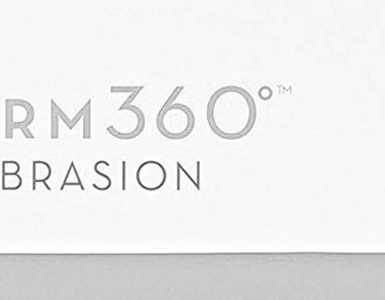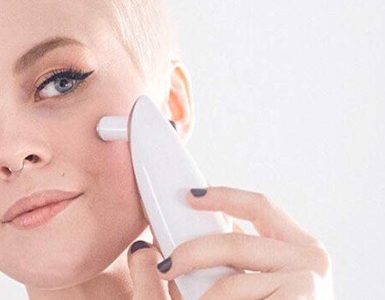What exactly is “exfoliation”?
Exfoliation is a process by which the top layer of dead skin cells is removed by using various cosmetic products or procedures. This is how the skin is smoothed, the pores look smaller, and the complexion becomes even. This is how the skin looks fresh and radiant, making you youthful and gorgeous
But if you over-exfoliate your skin, the imperfections you were trying to eliminate initially, may actually worsen.

Over-exfoliation happens when you exfoliate more skin cells than necessary.
The common side effects of over-exfoliating the skin include:
-
Increased skin dryness
If the skin cells removed are more than the necessary amount, this interrupts the proper functioning of the healthy ones. The result is that the natural lipid barrier (the acid mantle, covering your skin) is stripped away. This lipid barrier is made of mostly sebum and other tiny matters, including water, sweat, healthy bacteria and environmental materials.
The natural consequence of eliminating the skin’ acid barrier is moisture, evaporating through the skin, making it dry and easily irritated. The process is known as transepidermal water loss
-
Shiny, glossy skin
Usually, the skin becomes shiny because of the increased sebum secretion. However, when over-exfoliation is present, the dead cells removed. After being removed, they reveal a newer skin layer, which is formed by smoother and firmer cells. Without the dead skin cells, covering the stratum corneum, the skin appears shiny, even glossy.
-
Tight skin
When your facial skin feels stretched, it means it’s dry and dehydrated, because the lipid barrier is damaged.
This is a common symptom following excessive sun exposure or exposure to very low winter temperatures.
-
Increased acne
There is a very logical explanation behind every acne breakout following over-exfoliation. Unclogging the skin pores and deeply cleansing the skin does help reduce the appearance of acne. But over-exfoliation does the exact opposite – it dries out the skin to the point the sebaceous glands go into overdrive and start overproducing more sebum trying to make up for the lack of moisture, causing a flare-up or breakout in acne.
-
Increased redness
The natural result of skin exfoliation is short-term redness – due to the friction and increased blood flow. However, if you notice your skin substantially red and irritated for long periods of time, this is because you’ve over-exfoliate. You may even end up with broken capillaries, as the skin is irritated and the blood is working it’s hardest and the pressure damages the smallest blood vessels.
The effect of chemical peel is long-term skin redness because the blood vessels are severely damaged and need a couple of weeks before they can reverse their normal function.
-
Burning sensation
The burning sensation, which is a usual symptom of over-exfoliation, is a natural body response to inflammation after the skin is damaged. This happens when the nerve endings are stimulated and make you feel your skin burning. The friction, which is created by mechanical or chemical peeling results in skin shedding. Skin cells are burned off due to the friction applied.
In this aspect, the burning sensation caused by over-exfoliation very much resembles the situation when you fall off the ground – the injury happens the same way, you get an abrasion in the form of a road rash and it burns.
-
Edema
This is the unusual buildup of fluid under the skin and in the cavities of the body that can cause pain. Clinically, edema manifests as swelling. The amount of extracellular fluid is determined by the balance of fluid homeostasis. When skin is over-exfoliated, it’s inflamed, and one of the body’s responses to inflammation is edema, or swelling. Usually, the effect of over-exfoliation is a mild form of edema but if the friction is very intensive, and deeper skin layer is affected, severe swelling may be observed.
-
Hypersensitivity
As mentioned earlier, when the natural lipid barrier is broken down, the skin becomes more sensitive, more prone to irritation, caused by the contact with many other things like skincare products, water, sun damage, bacteria.
The problem with the increased skin sensitivity is that it easily responds to temperature fluctuations (cold, heat) with intense redness and increased discomfort, the appearance of hives, itching or eczema. The increased sensitivity makes the skin more delicate, allergic and prone to excessive dryness.
-
Increased peeling
Human skin normally peels 30,000 to 40,000 cells per minute at the microscopic level in a process called desquamation. In case the skin is over-exfoliated, its barrier gets disrupted, which makes it unable to hold onto enough moisture. The dead skin cells can now easily peel off and this is the purpose of most exfoliation-related procedures. The problem is when the number of flakes is too high and the period of flaking lasts too long – this means that the natural skin integrity is impaired and may require more time to recover.
-
Uneven skin tone
One of the long-term effects of over-exfoliation is hyperpigmentation and uneven skin tone, leading to premature aging of the skin. The pigment spots can vary in size and color, but most often they are 3-4 mm to 1 cm in diameter and the color is light to dark brown.
Their appearance is due to the increased synthesis of melanin in the skin, which is related to exposure to direct sunlight, especially without the use of sunscreen. Melanin accumulates unevenly and focuses on specific areas, making us look older than we are.
Conclusion
Finding the perfect balance when exfoliating the skin is crucial. The procedure provides indeed beneficial results for the skin in case it is properly performed, without damaging the healthy skin layers.
The skin may look worse or may become severely damaged only if over-exfoliation is present.





Add comment